The University of Alabama’s chapter of Tikkun Olam Makers, a student organization dedicated to engineering low-cost, open-source assistive devices, has garnered global recognition for its innovative approach to accessible technology.
Competing against 470 participants from 33 campuses across 13 countries in June, UA TOM was the only U.S. university to win a grand prize at the TOM Global Innovation Challenge — and one of only two U.S. schools to earn multiple awards.
The organization secured the Daily Living Grand Prize for its QuickClamp project, a universal wheelchair-to-scooter accessory designed by Sandra Onyishi, Zander Davidson and Lisa Clary-Galibert. An honorable mention and a PrintLab license went to the Parameterized Prosthetic Leg Cover, developed by Jesse Park, Dexter Gard, Camille Catron and Michael Auprince.
“This is about designing open-source, low-cost solutions for need-knowers,” said TOM President Jesse Park, a sophomore majoring in mechanical engineering. “Our goal is to create assistive tech for lesser-known disabilities to make day-to-day life easier.”
Prototyping for Purpose
Founded on principles of social entrepreneurship and frugal innovation, TOM uses rapid prototyping tools like 3D printing in combination with re-sourcing used materials to create low-cost, accessible devices. The group collaborates with The Cube — UA’s primary makerspace — and local fabrication centers to manufacture solutions that are both functional and affordable.
“The Cube is essential to our ability to produce these things,” Park said. “With novel additive manufacturing methods, like our black belt conveyor-belt 3D printer, we’re able to print parts that would’ve been impossible otherwise.”
Eight new assistive devices were launched by TOM in the past academic year. Four have working prototypes:
- Parameterized Prosthetic Leg Cover
- QuickClamp
- Wheelcover
- EcoCAR X TOM Augmented Hand Controls
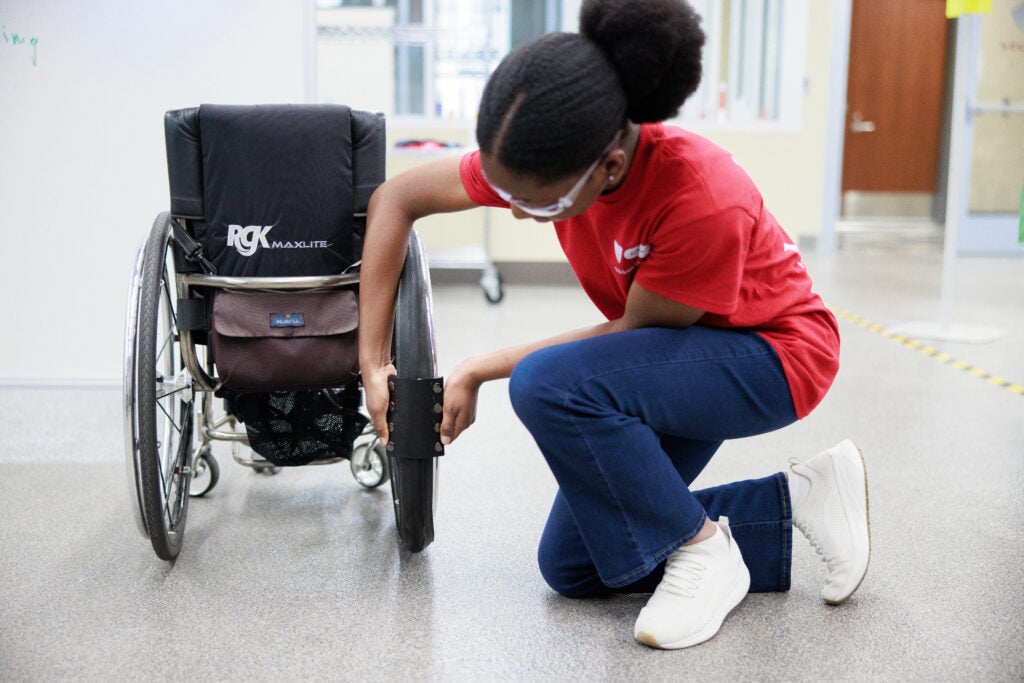
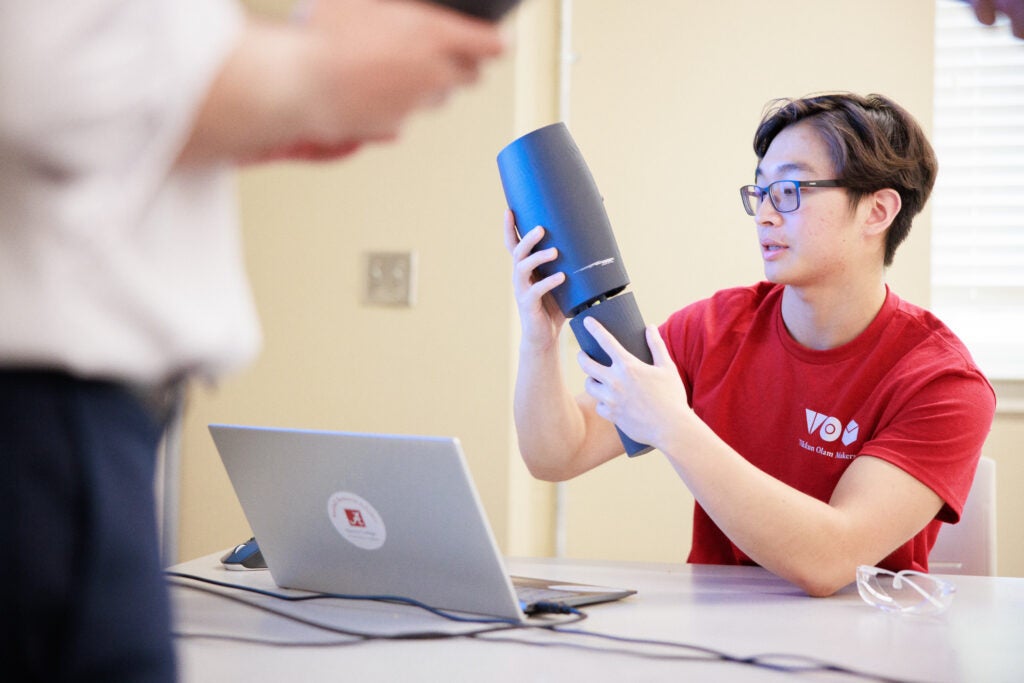
Many of the club’s designs stem from in-depth interviews with what the group calls need-knowers, or people with a personal experience and understanding of a problem or issue.
“We take a holistic, user-centered approach,” Park said. “It always starts with a conversation: how do they live, what’s not working, and what ideas do they already have in mind? Then we sketch, CAD and prototype — to reach real-world solutions.”
Real Challenges, Real Impact
One of the projects Park and other members developed is the prosthetic leg cover, created in collaboration with Michael Auprince, an assistant coach for UA’s men’s wheelchair basketball team.
Auprince explained some of the daily challenges he faced with his prosthetic leg.
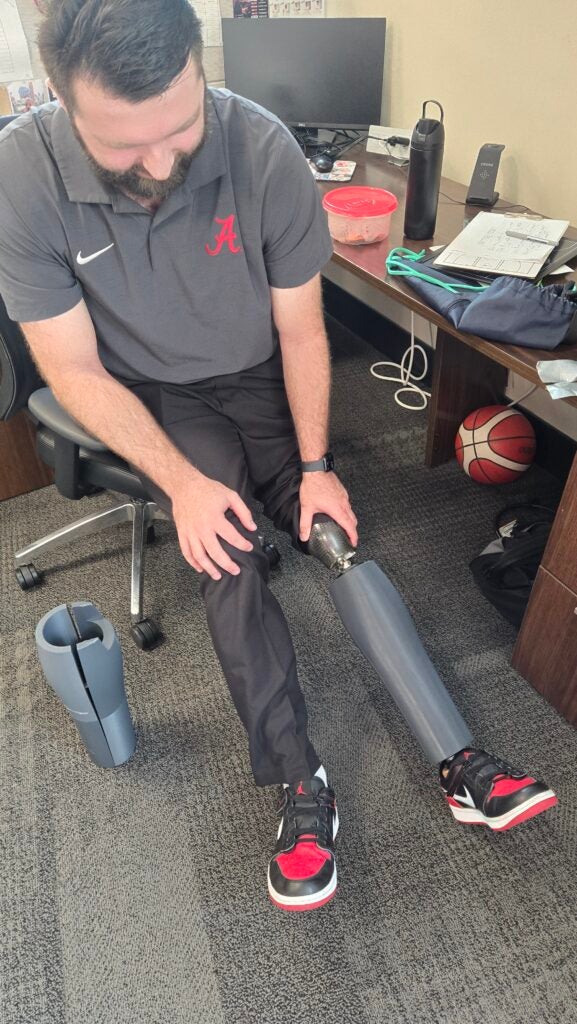
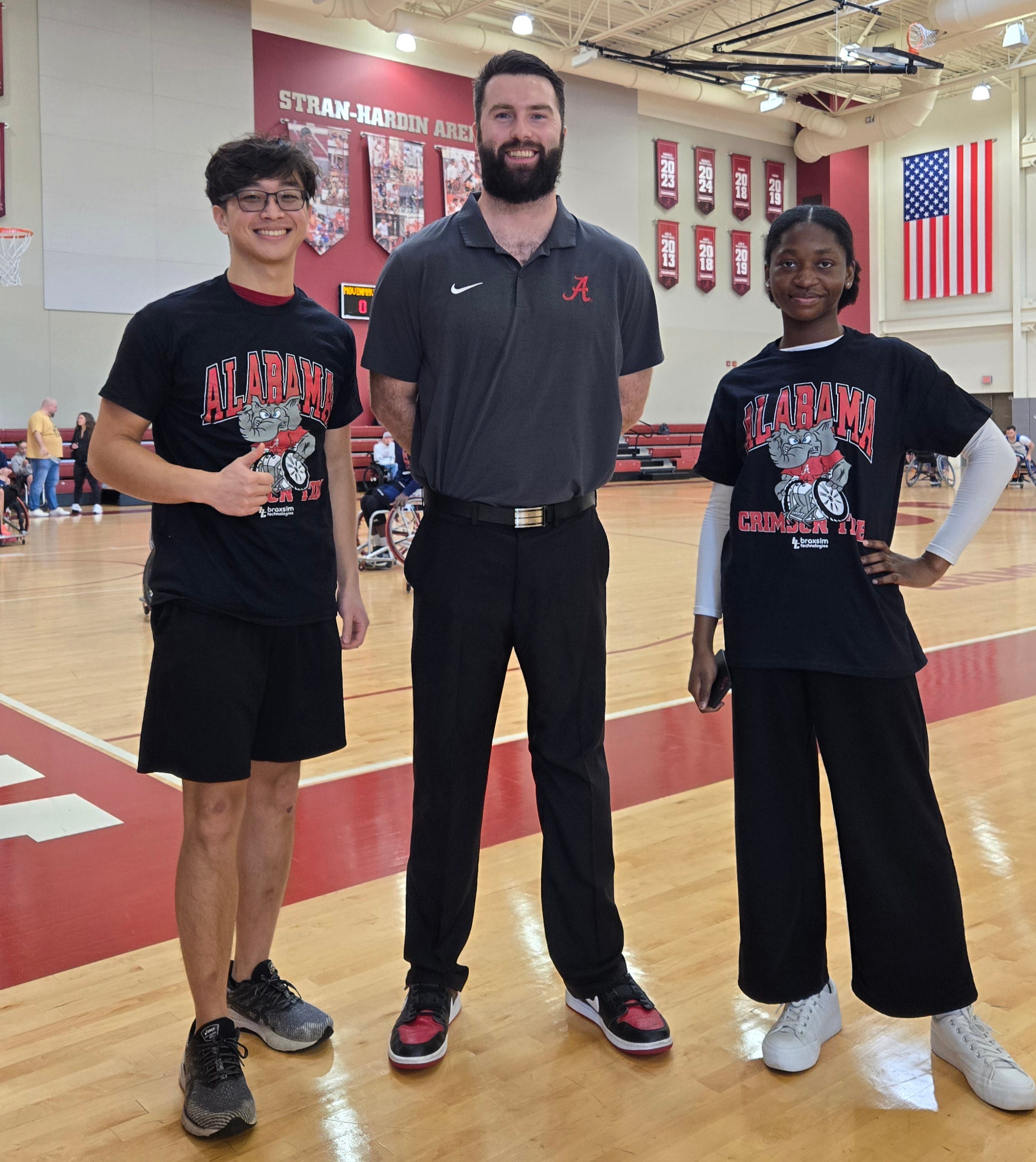
“When he wears long pants with his prosthetic leg, it sometimes ruins the fabric and looks visibly uneven,” Park explained. “The problem with current solutions is that they’re expensive and not very effective. So we asked, how can we use advancements in additive manufacturing to design a lightweight, cost-effective, biologically inspired shell?”
Using parametric modeling, the team created a two-shell mechanism customizable to the user’s exact leg dimensions. “Now, anyone can input their biological and prosthetic leg measurements and receive a 3D-printable model,” Park said.
A Startup Mindset
Park, who comes from a family with many members working in the medical field, said TOM blends his passion for helping others with his engineering skills.
“My dream has always been to be an entrepreneur who helps people,” he said. “TOM is basically my dream coming true — with the added benefit that the products I create actually help need-knowers live better lives.”
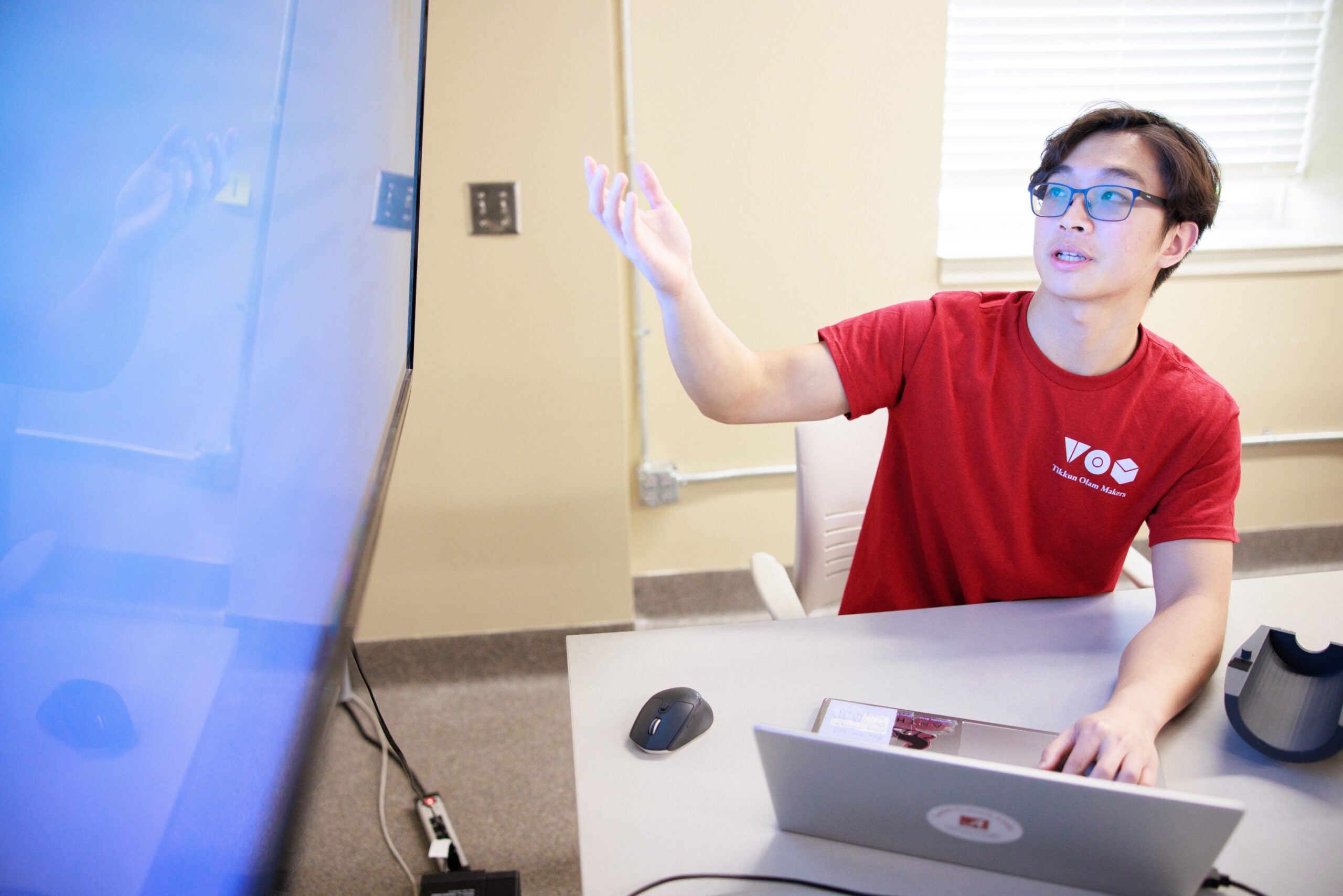
As the club president, he applies lean startup principles to TOM’s operations.
“We try to fail fast and learn quickly. We’re constantly printing prototypes, figuring out what doesn’t work, and improving — all at low cost.”
Skills That Scale
Members of TOM learn valuable technical and teamwork skills. “The main skill is CAD — computer-aided design — but also additive manufacturing,” Park said. “You learn that what you design isn’t always what prints, so there’s a real learning curve in building intuition for fabrication.”
The club draws from a diverse membership, including students in mechanical, electrical, and computer engineering, along with students majoring in finance, business and pre-med.
“Our strength is in collaboration,” Park said. “We’re not just engineering the same old products — we’re asking, how can we create new ideas and make them open-source, so people around the world can use them?”
Tikkun Olam Makers at UA may be building devices to assist need-knowers, but more than that, they’re building access and opportunity to improve lives.